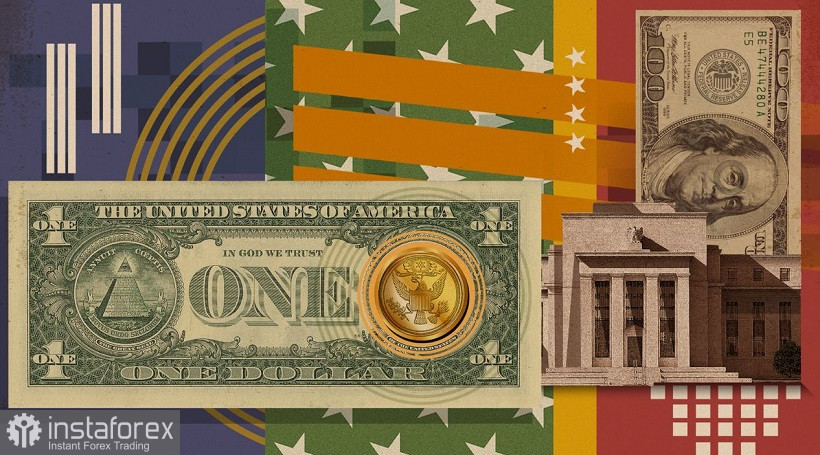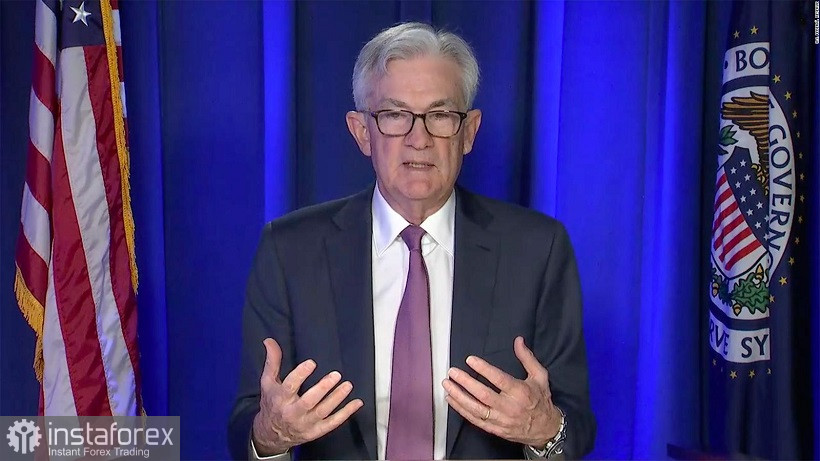The contradictory results of the Fed's March meeting failed to support the U.S. currency. On the one hand, the Fed raised the interest rate and announced further steps in this direction, on the other hand, Chairman Jerome Powell voiced rather cautious comments, thereby putting pressure on the greenback. After some hesitation, the pair continued the upward march, gaining a foothold within the 10th figure.

Buyers of EUR/USD have been besieging the 1.1000 mark for several days, but could not hold their positions above this target. The vague results of the Fed's March meeting helped the pair's bulls overcome the key resistance level. Now the outlines of the 11th figure have appeared on the horizon, but it is necessary to talk about the continuation of the upward movement with great caution, since the focus of attention will now switch back to geopolitics. And geopolitical factors are known for their changeability: the news background here is changing with kaleidoscopic speed – pessimism is replaced by cautious optimism and vice versa. In other words, the buyers of EUR/USD won a situational victory ("thanks" to the Federal Reserve), but did not win the battle: it is impossible to speak with certainty about the trend reversal so far. In such conditions, longs still look risky.
But let's return to the results of the next Fed meeting. Immediately after the publication of the accompanying statement, the dollar strengthened its positions throughout the market, reacting to the hawkish attitude of the regulator. Firstly, the Central Bank raised the interest rate by 25 basis points (there was no miracle - the Committee did not decide on a 50-point increase) and announced further steps to tighten monetary policy. In particular, the regulator indicated that the majority of Committee members expect 7 rate increases this year (by 25 points) - that is, at every meeting, including the December one. The voiced scenario, despite all its hawkishness, provided only formal support for the U.S. currency. It was too predictable a decision, which was discussed by experts and, accordingly, was included in the prices since the beginning of this year. The so-called dot forecast ("dot plot") also did not surprise: at the end of 2022, the federal funds rate should be 1.9%, and in 2023 it will reach 2.8% and remain at this level till 2024.
In other words, there was no "hawkish surprise" (in the form of a 50-point increase and a more aggressive attitude of the Fed), so the greenback paired with the euro strengthened its position by only a few dozen points. Dollar bulls probably hoped for Powell, who could strengthen the hawkish mood, but the head of the Fed in his characteristic manner voiced rather cautious theses, thereby exerting additional pressure on the U.S. currency.
Powell said that the central bank expects a significant decline in inflation in the second half of this year, despite the volatility in the oil market and increased geopolitical uncertainty. According to him, the impact of the geopolitical situation on the American economy is "highly uncertain." In light of these circumstances, the head of the Federal Reserve did not announce a more aggressive pace of tightening monetary policy (thereby not confirming rumors that in May the rate could be raised by 50 points at once). He only indicated that the decision on raising the rate and the amount of this increase "will be taken at each separate meeting, depending on the incoming statistical data."
Also, Powell sounded quite streamlined signals about when the Fed will start reducing assets on its balance sheet, which has reached almost $9 trillion. He admitted that an official statement on this issue "may be made in the second half of spring, most likely in May." According to him, the regulator will reduce the volume of assets on the balance sheet "in approximately the same ways as in the previous ones, but probably at a more active pace." This suggests that the Federal Reserve will refuse direct sales of bonds, but will wait for their redemption.
In general, Powell focused on high inflation, while highlighting the topic of geopolitical risks. But at the same time, he did not force things, acting within the framework of a scenario predicted and expected by traders. Such results of the March meeting did not "drown" the dollar, but did not serve as a springboard for another dollar rally. After some hesitation, EUR/USD buyers were able to seize the initiative, gaining a foothold within the 10th figure.

However, for the development of the upward movement, the bulls of the pair need to move as far as possible from the level of 1.1000, while at the moment the upward move has clearly stalled. Buyers try to move forward, but each point is difficult for them. It is important to understand that the current price growth is due solely to the weakening of the U.S. currency, while the euro does not have its own arguments for its strengthening. The dollar, in turn, retreated from previously won positions due to a decrease in the level of anti-risk sentiment. The ongoing negotiations between Russia and Ukraine allow the bulls of the EUR/USD pair to counterattack, keeping the price around the middle of the 10th figure.
It should be noted here that further growth prospects for the pair are rather vague. To reverse the trend, the EUR/USD bulls need more weighty arguments. The very fact of negotiations reduced the degree of tension in the financial markets only temporarily: if in the foreseeable future (until the beginning of next week) there are no real steps to reach a compromise, the greenback will begin to gain momentum again. Not to mention the scenario of a negotiation failure - in this case, the EUR/USD bears will get back on the horse, due to a significant strengthening of the safe dollar.
From the technical point of view, the ceiling of the corrective rollback is 1.1090, which is the middle line of the Bollinger Bands indicator on the D1 timeframe. If the upward momentum begins to fade around this price level, sales will again be in priority. In the very near future, the market will completely switch to geopolitics, having digested the results of the March meeting of the Fed, which, as we see, turned out to be not so sad for the greenback.
 English
English 
 Русский
Русский Bahasa Indonesia
Bahasa Indonesia Bahasa Malay
Bahasa Malay ไทย
ไทย Español
Español Deutsch
Deutsch Български
Български Français
Français Tiếng Việt
Tiếng Việt 中文
中文 বাংলা
বাংলা हिन्दी
हिन्दी Čeština
Čeština Українська
Українська Română
Română

